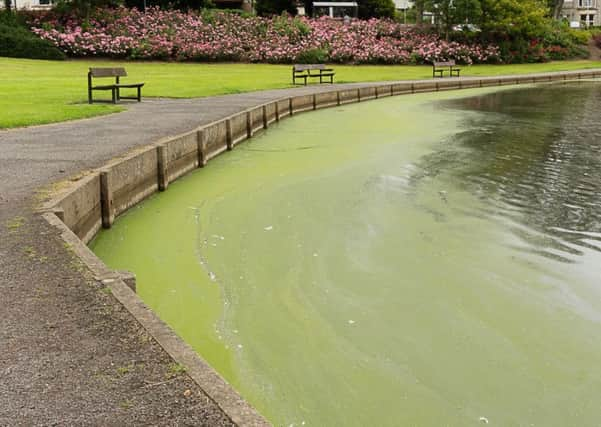Keep dogs away from water affected by blue green algae


Several locations have been affected this summer, prompting the British Veterinary Association (BVA) to issue a cautionary warning.
Blue green algae blooms may appear as green or greenish-brown scum on the surface of water and can contain toxins that are harmful for animals if ingested, even in small quantities.
Advertisement
Hide AdAdvertisement
Hide AdDogs can swallow this algae by drinking water from an affected lake, river or pond, or while licking their fur after going for a swim.
Symptoms of exposure can appear within a few minutes or hours, depending on the type of toxin ingested. They include vomiting, diarrhoea, drooling, disorientation, trouble breathing, seizures and blood in faeces. If left untreated, it can cause liver damage and, ultimately, death.
Daniella Dos Santos, BVA junior vice president said: “My advice to pet owners would be to keep your dog on a lead during walks near water with toxic algal blooms.
“While not all blue green algae are poisonous, it is impossible to tell the difference visually, so it is better to be safe than sorry.
Advertisement
Hide AdAdvertisement
Hide Ad“There is currently no known antidote for the toxins, so prompt veterinary treatment is essential to tackle their effects and ensure a good chance of recovery.”
BVA has issued these tips to keep dogs safe:
• Look out for warning signs put up by the Environment Agency or councils near water bodies.
• Keep pets on a lead and by your side around water bodies known or suspected to have blue-green algal bloom.
• If your dog has been swimming outside, wash it thoroughly with clean water afterwards.
• Rush your pet to a vet immediately if you believe it may have ingested toxic algae.